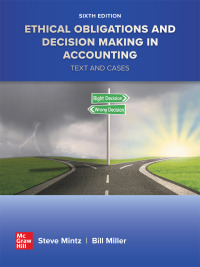Occupational fraud comes in many shapes and sizes. The $12.9 million dollar fraud and kickback scheme at
Question:
Occupational fraud comes in many shapes and sizes. The $12.9 million dollar fraud and kickback scheme at Rite Aid is one such case.
In February 2015, Jay Findling, a New Jersey businessman, pleaded guilty to charges of conspiracy to commit wire fraud. Former vice president, Timothy Foster, pleaded guilty to making false statements to authorities. On November 16, 2016, Foster was sentenced to five years in prison and Findling, four years. Findling and Foster were ordered to jointly pay $8,034,183 in restitution. Findling also forfeited and turned over an additional $11.6 million to the government at the time he entered his guilty plea. In sentencing Foster, U.S. Middle District Judge John E. Jones III expressed his astonishment that in one instance at Rite-Aid headquarters, Foster took a multimillion dollar cash pay-off from Findling, then stuffed the money into a bag and flew home on Rite Aid’s corporate jet.
The charges relate to a nine-year conspiracy to defraud Rite Aid by lying to the company about the sale of surplus inventory to a company owned by Findling when it was sold to third parties for greater amounts. Findling would then kick back a portion of his profits to Foster. Foster’s lawyer told Justice Jones that, even though they conned the company, the efforts of Foster and Findling still earned Rite Aid over $100 million “instead of having warehouses filled with unwanted merchandise.” Assistant U.S. Attorney Kim Daniel focused on the abuse of trust by Foster and persistent lies to the feds. “The con didn’t affect some faceless corporation, Daniel said, “but harmed Rite Aid’s 89,000 employees and its stockholders.” Findling’s attorney, Kevin Buchan, characterized his client as “a good man who made a bad decision.” “He succumbed to the pressure. That’s why he did what he did and that’s why he’s here,” Buchan said during sentencing.
Findling admitted he established a bank account under the name “Rite Aid Salvage Liquidation” and used it to collect the payments from the real buyers of the surplus Rite Aid inventory. After the payments were received, Findling would send lesser amounts dictated by Foster to Rite Aid for the goods, thus inducing Rite Aid to believe the inventory had been purchased by J. Finn Industries, not the real buyers. The government alleged Findling received at least $127.7 million from the real buyers of the surplus inventory but, with Foster’s help, only provided $98.6 million of that amount to Rite Aid, leaving Findling approximately $29.1 million in profits from the scheme. The government also alleged that Findling kicked back approximately $5.7 million of the $29.1 million to Foster.
Assume you are the Director of Internal at Rite Aid and discover the surplus inventory scheme. Explain the steps you would take to determine whether you would blow the whistle on the scheme by applying the requirements of Exhibit 3.15 on subordination of judgment. In that regard, answer the following questions.
Questions
1. Assume you have decided to report the fraud. What would your first step be? That is, to whom would you report the fraud and why?
2. Assume the audit committee informs you that it has decided not to report the fraud to the SEC during the current period because they don’t want to raise suspicions about the quality of earnings and fraudulent activities. The committee did hold open the possibility of reporting the fraud in the next period and then putting through an error correction. How might you counter the likely reasons and rationalizations given by the audit committee for its decision?
3. In the case, Findling’s attorney, Kevin Buchan, characterized his client as “a good man who made a bad decision.” “He succumbed to the pressure. That’s why he did what he did and that’s why we’re here,” Buchan said during sentencing. Do you believe that the actions of Findling can best be characterized as “sometimes, good people do bad things?” Consider the six pillars of character discussed in chapter1 in answering this question.
Step by Step Answer:

Ethical Obligations And Decision Making In Accounting Text And Cases
ISBN: 9781264135943
6th Edition
Authors: Steven Mintz





